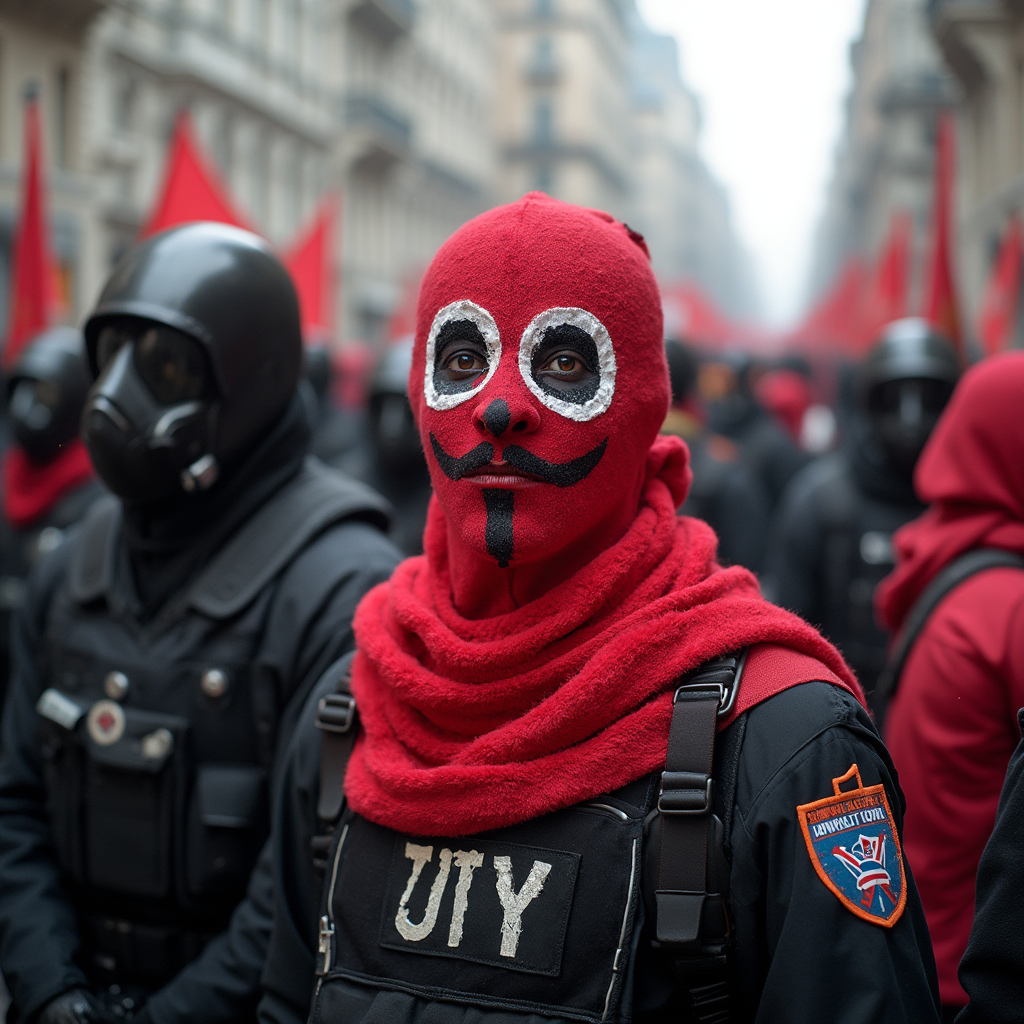In recent years, political extremism has surged, impacting the United States and nations worldwide. Extremist ideologies on both ends of the political spectrum—right and left—have moved further apart, sometimes resulting in violent or disruptive events. As we explore these movements, both domestically and internationally, a nuanced picture emerges that highlights not only the ideologies of each side but also how each compares to global counterparts. This comprehensive analysis delves into the right-wing and left-wing extremism landscape in the U.S., contrasts these movements with similar trends abroad, and examines the presence of organized socialist and communist parties in the United States.
Understanding Right-Wing Extremism in the U.S. and Internationally
Right-wing extremism, defined by ultra-nationalism, anti-immigration sentiment, and exclusionary ideologies, has risen in several Western democracies. While nationalism is not new, modern movements have taken on more radical tones, and this trend isn’t unique to the U.S. In countries like Germany, the U.K., France, and Sweden, right-wing activity ranges from public demonstrations to violent acts targeting minority groups. In Germany, for instance, far-right groups, including elements within the political party Alternative für Deutschland (AfD), advocate for anti-immigrant policies and “German identity.” The country’s history and experience with fascism have led to proactive governmental responses; Germany’s intelligence agencies now monitor several extremist factions, underscoring how serious the government views this threat.
In the U.S., right-wing extremism has evolved significantly. While traditional right-leaning perspectives generally emphasize limited government and cultural conservatism, recent years have seen the rise of more radical groups, including the Oath Keepers, Proud Boys, and Three Percenters. These groups often espouse ultra-nationalist, anti-immigrant views and, in some cases, endorse authoritarian principles. The January 6th Capitol riot in 2021, fueled by unsubstantiated claims of election fraud, brought global attention to the power and threat of far-right extremism in the U.S.
According to the Anti-Defamation League, right-wing extremists accounted for 75% of extremist-related murders in the U.S. between 2010 and 2019. Many of these individuals and groups view demographic and cultural shifts as existential threats to “American identity.” With distrust of government and democracy at the core, right-wing extremism in the U.S. manifests through conspiracy theories, militia-like organizations, and even calls for armed resistance.
Internationally, the U.S. stands out for its unique combination of an active social media presence where misinformation circulates, broad access to firearms, and an entrenched two-party system that fosters polarization. Compared to other nations where right-wing movements are more contained or systematically countered, these factors increase the frequency and intensity of far-right violence in America.
Left-Wing Extremism in the U.S. and Abroad
On the opposite side of the political divide, left-wing activism in the U.S. is also gaining momentum. While traditional left-wing policies focus on social welfare, labor rights, and equality, the American far-left has expanded to include anti-capitalist, abolitionist, and socialist perspectives that call for deep systemic reform. Organizations such as Antifa (a decentralized, anti-fascist movement) have received substantial media attention. Antifa activists oppose fascist and right-wing ideologies and have, on occasion, engaged in disruptive or confrontational tactics, particularly during protests for racial justice and police reform.
While property damage and civil unrest have occurred at some left-wing protests, studies show that left-wing violence in the U.S. is less common than right-wing violence. According to the Center for Strategic and International Studies, left-wing extremism accounted for around 20% of terrorist incidents in the U.S. between 2010 and 2020, compared to 67% attributed to right-wing violence.
Abroad, left-wing extremism also varies in intensity. In countries like Greece and Italy, anti-fascist groups have clashed with far-right activists, occasionally escalating into violent confrontations. France’s Yellow Vest movement—though not strictly left-wing—began as a protest against fuel taxes and grew to encompass broader social justice issues, resulting in clashes with law enforcement. These instances show that left-wing activism can take on a militant stance in certain contexts, sometimes even more so than in the U.S. However, in many European nations, left-wing movements are more integrated into formal political structures, giving them a legitimate outlet for their demands.
In the U.S., by contrast, the left’s more radical elements often exist outside of mainstream politics, mainly due to the electoral barriers that favor the two-party system. The result is that left-wing activists tend to operate on the margins, occasionally using disruptive tactics to call attention to issues of inequality, police reform, and climate action.
The Role of Social and Economic Factors
Economic hardship and inequality often fuel both right-wing and left-wing extremism. In the U.S., these factors contribute to the growth of extremism, as stark divides between political, racial, and economic groups create fertile ground for radical ideologies. For example, economic inequality, racial tensions, and political polarization between Republicans and Democrats create an environment where both right- and left-wing extremism can thrive. The prevalence of social media platforms further amplifies these divides, creating echo chambers that reinforce grievances.
Internationally, similar dynamics exist. The refugee crisis in Europe and concerns about cultural identity have fueled right-wing movements, while austerity measures and labor issues often drive left-wing activism. In countries with more robust social safety nets, such as Norway and Denmark, there tends to be less political extremism, indicating that addressing economic inequality can mitigate the conditions that often foster extremism.
Socialist and Communist Parties in the U.S.
Unlike many European and South American countries, where socialist and communist parties have historically held political power or are represented in government, these parties are marginalized in the U.S.
The most prominent socialist organization in the U.S. is the Democratic Socialists of America (DSA). Founded in 1982, the DSA has gained traction in recent years, especially since Bernie Sanders’ 2016 presidential campaign. While Sanders identifies as a democratic socialist, the DSA does not function as a traditional political party. Rather, it operates as an advocacy group within the progressive movement, pushing for policies such as universal healthcare, labor rights, and wealth redistribution. The DSA typically endorses candidates within the Democratic Party who align with its ideals rather than fielding its own candidates. This strategy reflects the group’s pragmatic approach to achieving policy change in a two-party system.
Another example is the Socialist Party USA, which advocates for more traditional socialist policies, including the nationalization of industries and democratic socialism. Although the Socialist Party USA occasionally fields presidential and local candidates, it struggles to overcome the structural challenges that third parties face in the U.S., and its influence remains limited.
The Communist Party USA (CPUSA), founded in 1919, supports Marxist-Leninist principles and advocates for the abolition of capitalism in favor of a state-controlled economy based on public ownership and wealth redistribution. CPUSA had a larger influence during the labor movements of the early 20th century, but its influence waned dramatically during the Cold War, when associations with communism became politically toxic. Today, CPUSA remains active but largely marginalized, often operating as a minor player in broader left-wing movements.
The challenges faced by these socialist and communist organizations highlight the structural and cultural barriers in the U.S. Unlike in European countries where socialist parties often participate in coalition governments, the U.S. two-party system and cultural stigma around socialism and communism (rooted in Cold War antagonism) make it difficult for these groups to gain widespread traction. As a result, even progressive policies resembling social democracy are often framed in non-socialist terms to gain broader acceptance among the American public.
Governmental and Societal Responses to Extremism
Governments worldwide have taken different approaches to extremism, reflecting both the severity of the issue and societal attitudes. In Germany, for instance, right-wing groups are actively monitored due to the country’s history with fascism. The U.K. operates a “Prevent” program to identify individuals at risk of radicalization from both right and left-wing extremism, though it has faced criticism for focusing more on Islamist extremism than domestic issues.
In the U.S., handling extremism presents unique challenges due to constitutional protections of free speech and assembly, which safeguard even radical beliefs unless they lead to violence. This has made it difficult for law enforcement to act preemptively against extremist groups. Additionally, polarization has created ideological divides, with some Americans viewing right-wing militias as defenders of liberty and others viewing left-wing activists as champions of civil rights. This divergence complicates cohesive, bipartisan responses to extremism.
Conclusion
The U.S. and international communities both grapple with extremism on the right and left, but each faces unique challenges due to historical, cultural, and political contexts. In the U.S., the far right has gained notoriety through incidents like the January 6th Capitol riot, fueled by distrust of the government and demographic changes. Far-left activists, though less violent, call for transformative change, especially regarding economic inequality and systemic discrimination.
Internationally, extremism on both ends also exists, but other countries often handle it differently, with stricter laws, more integrated left-wing parties, and social safety nets that mitigate the issues fueling radical ideologies. In the U.S., socialist and communist organizations remain marginalized due to a deeply entrenched two-party system and cultural resistance to these ideologies.
Ultimately, addressing extremism requires nuanced strategies that account for social, economic, and political factors. The U.S. stands out as a highly polarized society with a complex landscape of extremism, but understanding and addressing these divisions is essential for fostering a stable and unified society.





Leave a Reply